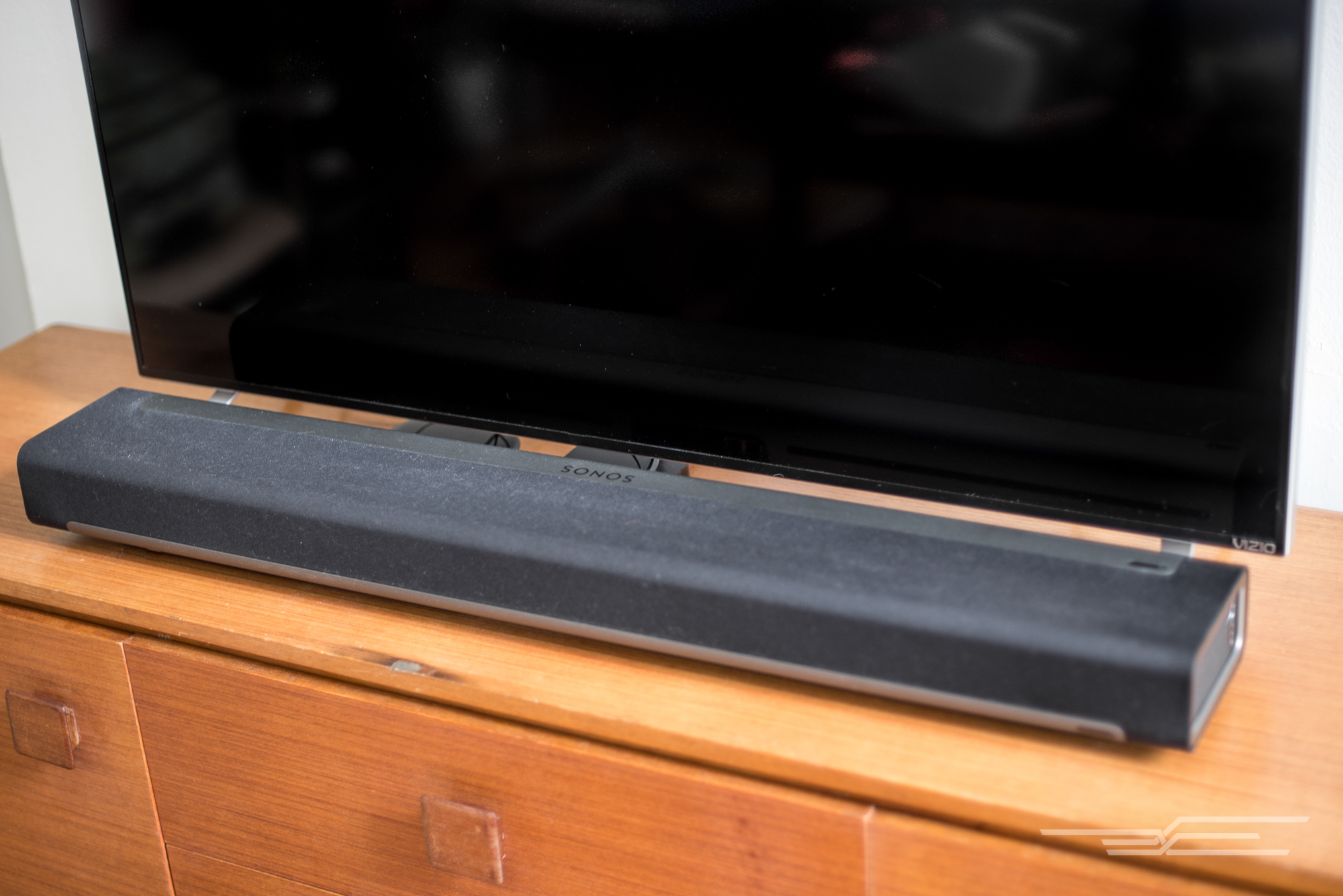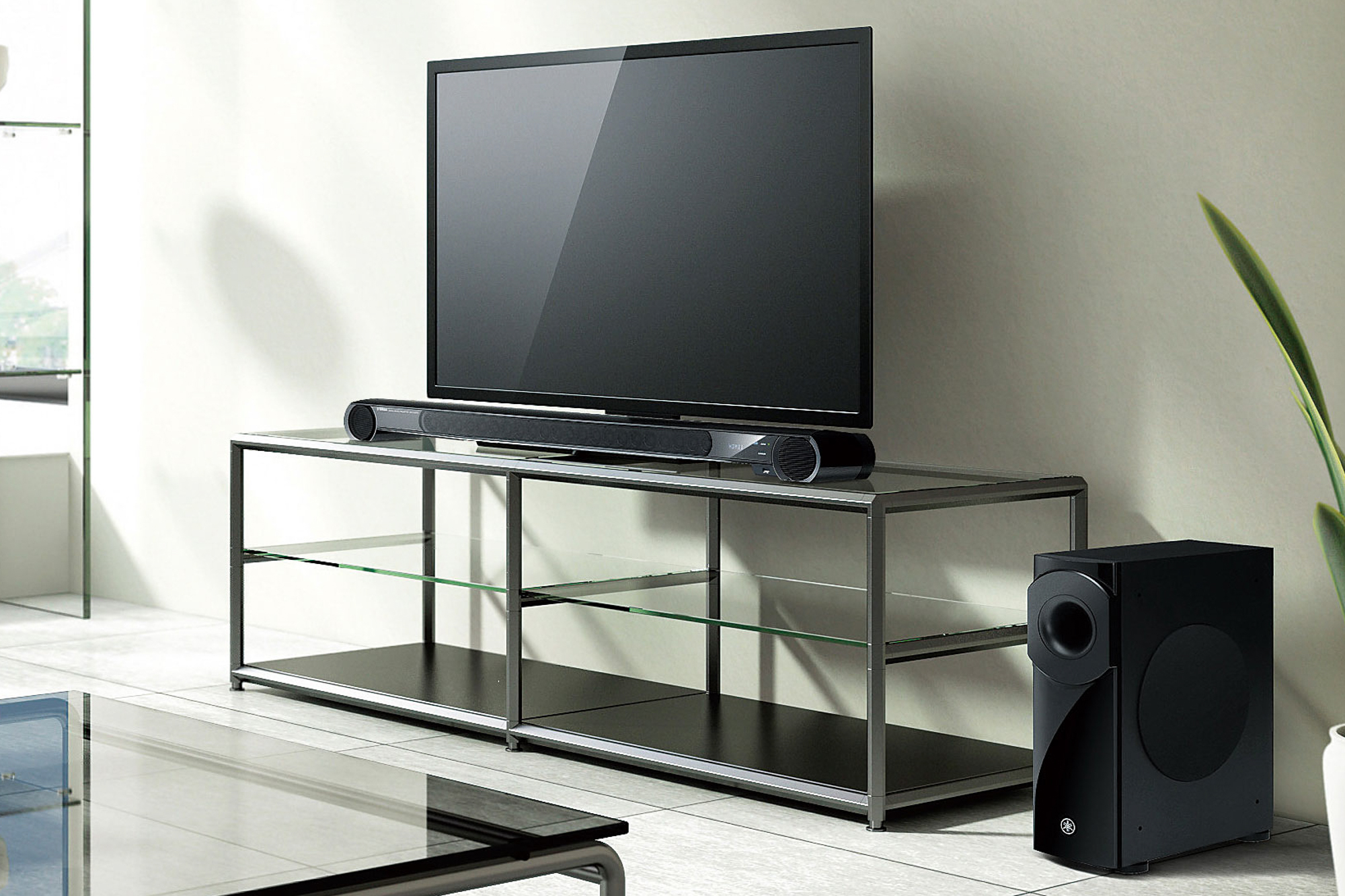Who this is for
A soundbar provides much better sound quality than the speakers in a TV, computer, or smartphone, without the complexity of a receiver and speakers. Separate components almost always provide more value for your dollar, but they also take up more space and require additional cables; their operation is more complicated, too. Using a soundbar, you can have most of that additional sound quality without adding much complexity to your setup.
How we picked and tested

Three of the soundbars we tested (top to bottom): Sonos Playbar, Paradigm Soundscape, and Yamaha YSP-4300. Photo: Chris Heinonen
After parsing through many, many reviews and speaking to soundbar reviewers, we selected the soundbars to bring in for evaluation based on sound quality and price. We eliminated soundbars with pedestal designs, passive soundbars, and almost anything without Bluetooth or AirPlay support. For more on how we picked, read our full guide.
After selecting six bars, we set them up in a home theater room with acoustic treatments for listening and evaluation. Over one week, we listened to and took extensive listening notes for each individual bar playing from the same selection of music and movies for almost three hours. We did additional listening in a living room with the soundbar on top of a credenza, with a wall to the left and open space to the right, to weed out any soundbars that relied on having a perfect room to pull off their surround effects or imaging, which people don’t always (or ever) have.
Then we consulted the ears of Stephen Hornbrook, an audio reviewer at Secrets of Home Theater and High Fidelity, to help us directly compare the soundbars with one another and narrow the group to an overall winner. We listened to the soundbars over HDMI, optical, coaxial, and analog inputs, and we used blind A-B switching when possible.
Our pick

The Sonos Playbar is low but deep. Photo: Michael Zhao
The Sonos Playbar is a great-sounding soundbar with lots of features that make it easy to use as the center of an entertainment system. The Playbar is dead simple to set up and gives you the best access to streaming content or your music library of any soundbar out there. Aside from wireless connectivity using its proprietary app, the Sonos is rather limited connectionwise: It doesn’t have traditional Bluetooth or AirPlay support and has only a single optical input. But if you’re simply looking for a great-sounding, simple option that you can expand into a whole-home audio system, it’s hard to knock. And if you access all your content from a digital music library or streaming services, or if you’ve already bought into the Sonos ecosystem and want a soundbar to add to your setup, the Playbar is pretty much a no-brainer.
All in all, the sound quality of the Playbar is noticeably better than most rivals. It can’t hit the low octaves our upgrade pick, the Paradigm Soundscape, can, at least not without the assistance of a Sonos Sub (which itself costs as much as the Playbar). It does offer very good performance above those lowest octaves. Even without the benefit of surround speakers, it delivers a soundstage that is both wide and pleasantly deep, and thanks to its discrete tweeters, it produces clear highs and highly intelligible voices without the muddiness that can plague many single-driver (i.e., cheaper) soundbars.
Upgrade pick

The Paradigm Soundscape has a lot of inputs and great, rich sound. Photo: Dennis Burger
The Paradigm Soundscape offers even better sound quality than the Sonos and is one of the best-sounding soundbars available. It also has a wide selection of inputs (including Bluetooth with AptX), and simple setup and operation. Setting it up is as easy as plugging it into the wall and TV. An LED readout lets you quickly determine your input and volume, and if you want more bass, the included wireless adapter works with any subwoofer that you choose—a rarity in this age of proprietary protocols.
When you’re paying this much for a soundbar, you want it to sound great, which the Paradigm Soundscape does. It bested almost all its competitors in our testing thanks to a more-accurate lower-mid range that bestows some extra richness and warmth on movies and music. It throws a very large, involving soundstage and offers clear dialogue too.
The best surround-sound bar

Photo: Yamaha
The Yamaha YSP-4300 is a slim soundbar with an included wireless subwoofer that does a better job of providing simulated surround effects than anything else we’ve heard. An array of 22 “beam drivers” in the middle of the bar reflect sound off the walls and ceiling to simulate the presence of surround speakers in the room. Using an included calibration microphone, it determines the correct levels and automatically sets up the beam system for you. When you’re watching movies, the surround effects seem to come from your side or even behind you (depending on your room), an impression that no other bar in our test could manage. It’s not the best bar overall because it’s hundreds of dollars more than the Paradigm Soundscape, which sounds better overall (though without the flashy surround sound beaming), However, the Yamaha is great for TV and movies.
This guide may have been updated by The Wirecutter. To see the current recommendation, please go here.
Note from The Wirecutter: When readers choose to buy our independently chosen editorial picks, we may earn affiliate commissions that support our work.




